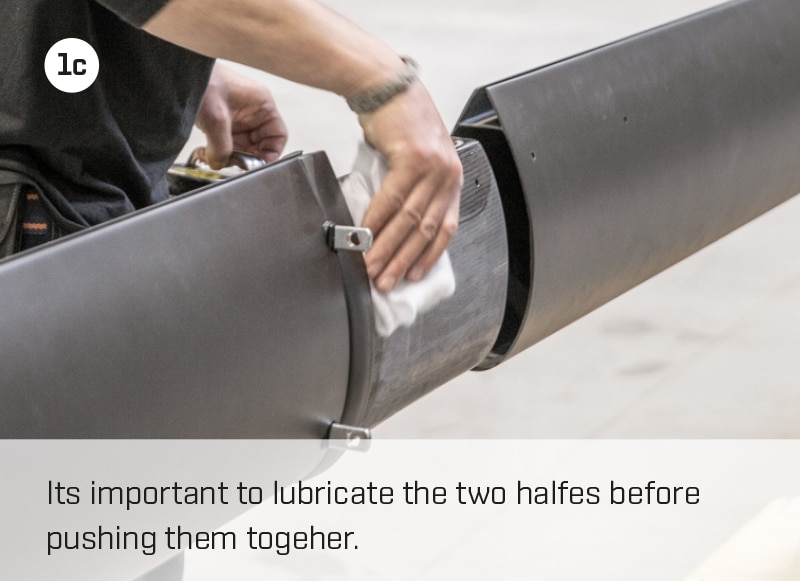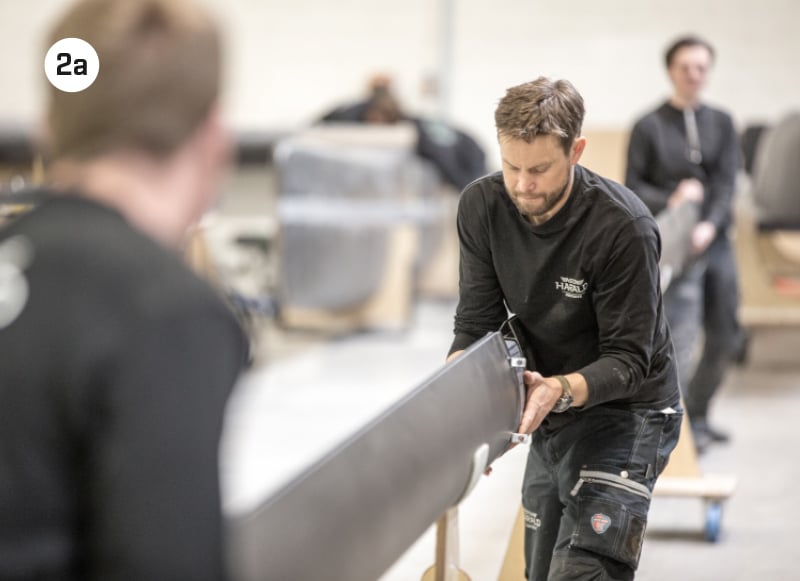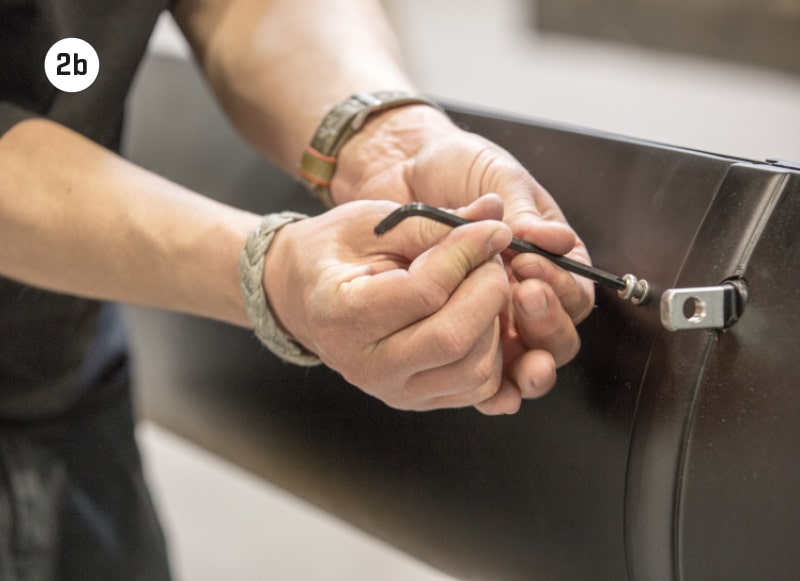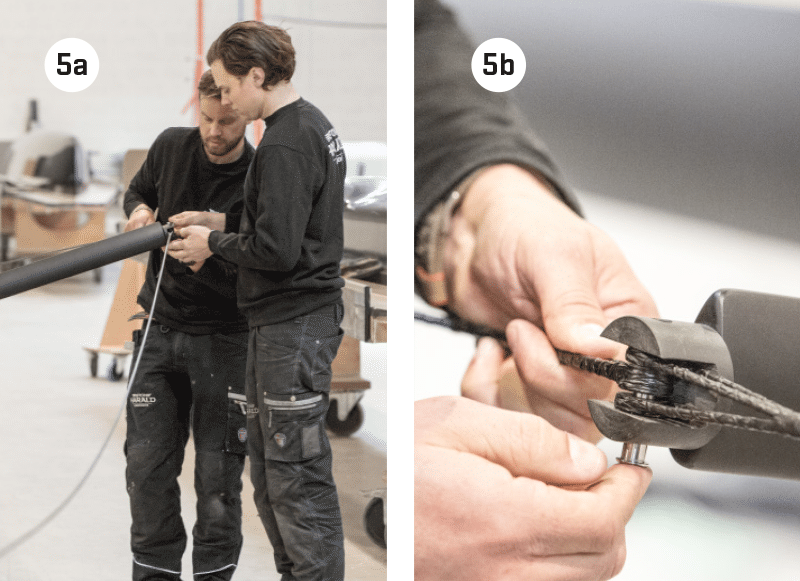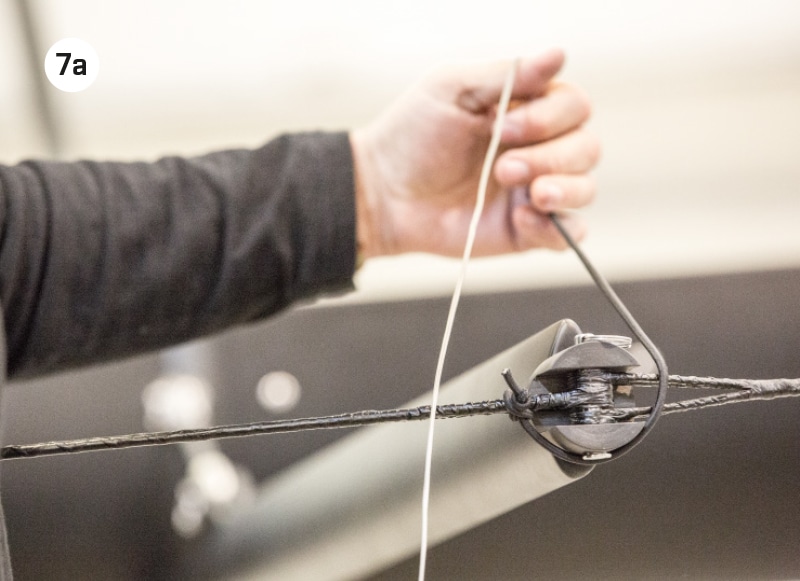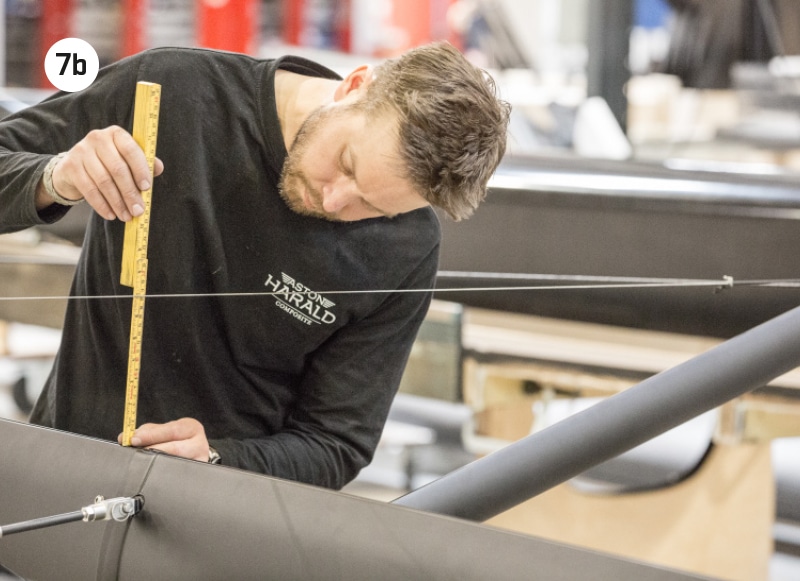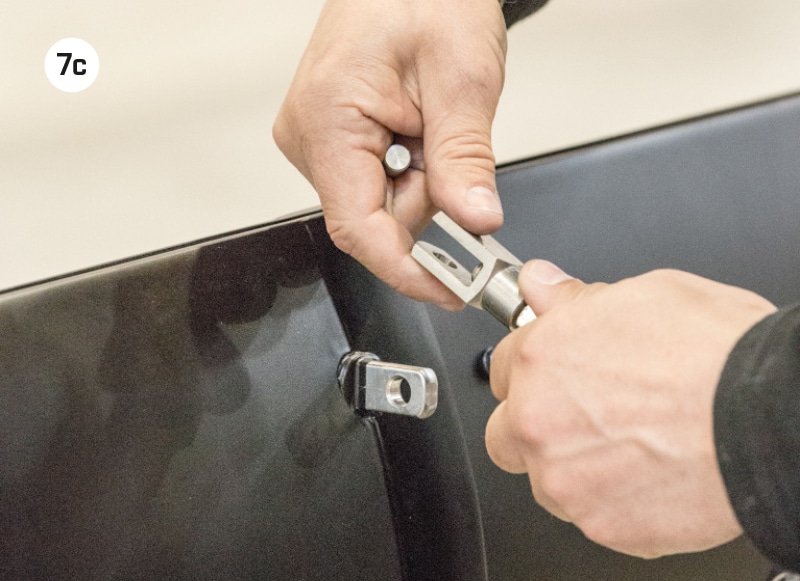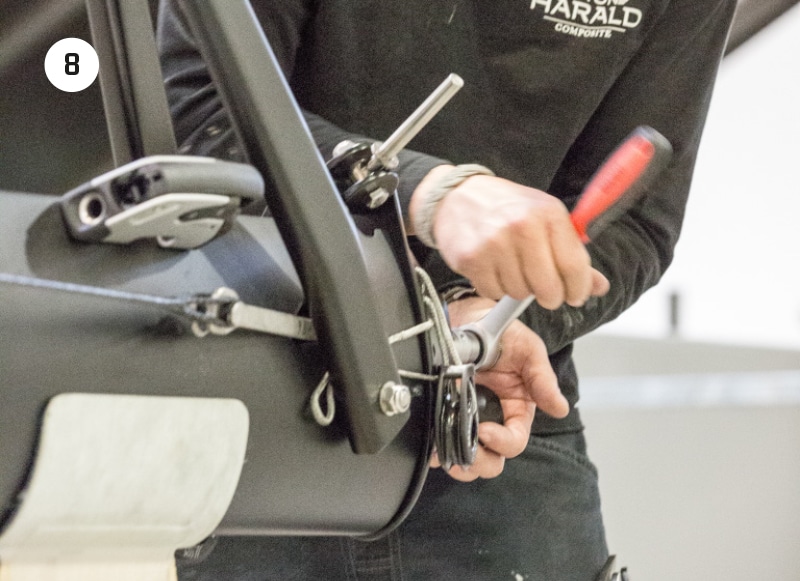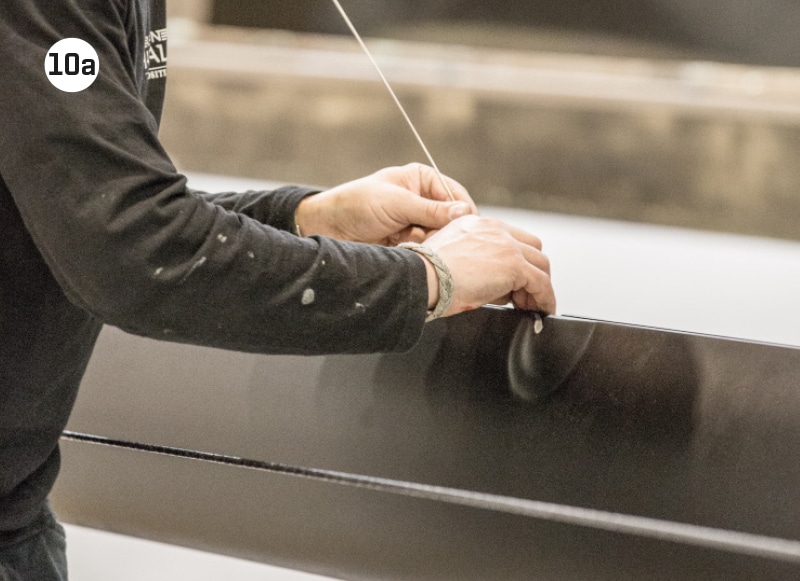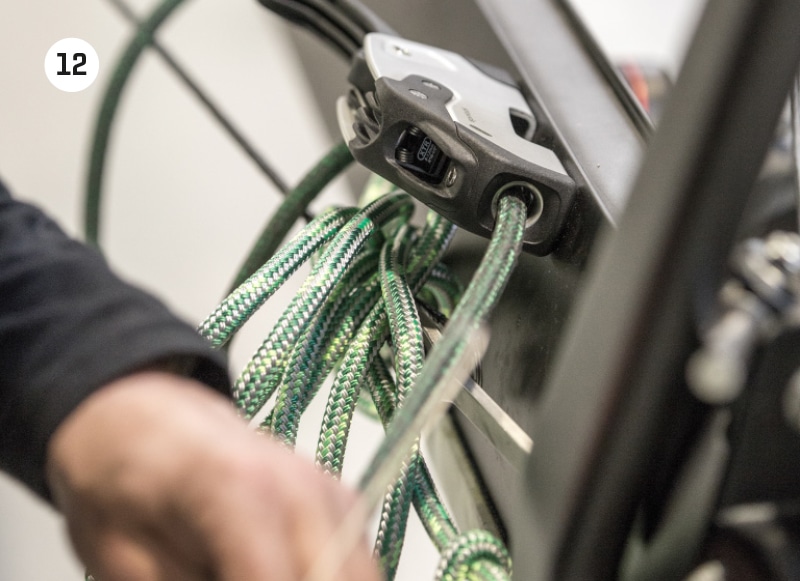1.) Place the lower and upper mast tubes collinear to each other either on stands or padding on the ground.
2a.) Push the two mast halves together and insert and tighten lightly the 6 M6 screw that locks the lower and upper mast tubes together, (2 on the leading edge and 2 on each side close to the trailing edge).
2b.) Make sure that the mast halves are a tight fit, if this is not the case this needs to be ensured by bedding the joint with adhesive
3.) Connect the spreaders to the mast; the key ring shall be on the lower side. Only the 2 Clevis pins closest to the mast shall be disconnect when removing a spreader.
4.) The diamond turnbuckle needs to properly greased and clean to function. It’s a good opportunity to clean and service the turnbuckle when the mast is disassembled. Unscrew and remove the bolt entirely, do not remove the hanger from the mast. Clean the bolt, bronze nut and washer. Put grease on the entire thread of the bolt and bronze nut + some grease on the washer. We recommend “Rocol ANTI-SEIZE Stainless”. Other marine grease for stainless should function.
! Connect the spreaders to the mast; the key ring shall be on the lower side. Only the 2 Clevis pins closest to the mast shall be disconnect when removing a spreader.
5.) Attach the lower diamond on one side to the diamond turnbuckle and then connect it to the upper diamond at the spreader tip. Support the upper diamond to prevent unnecessary load on the stay. It is good to have marked the diamonds stays so one knows which is starboard and port.
6.) Attach the upper diamond to the mast.
VERY IMPORTANT!
It is VERY IMPORTANT that the clevis pin is orientated with the head facing towards the trailing edge of the mast and the key ring is towards the leading edge of the mast. The shrouds can be damaged and the mast can fall down if the clevis pin is orientated the wrong way.
7.) How to check the spreader angle:
Pull a string tight between the center of the spreader tips and measure the distance between the string and the trailing edge of the mast at the joint. Standard measurement is 190mm, minimum is 180mm and maximum is 200mm. Larger spreader angle will give more mast prebend. The adjusted length of the spreader turnbuckles must be the same on both sides. A halft turn on turnbuckles gives approximately a 5mm change in spreader angle. As shown in picture 7a the string should be pulled just above the end fitting on top of the diamond stay.
8.) Tension the diamond turnbuckle until you get your required prebend.
! Prebend should be a minimum of 70mm with full main and 80mm when sailing with a reef.
9.) Prebend is defined in this case as the distance between the trailing edge at the spreader and an artificial straight line between the upper most point and lowest point of the trailing edge of the luff track. When measuring the prebend the mast supports shall be placed 150cm above the bottom end of the mast and one 20cm above the upper diamond stay fitting.
IMPORTANT!
The halyards need to have a diameter of 8mm to prevent the halyards to come out through the luff track. Do not remove the cover or use lesser diameters.
10.) Remove the top sheave to insert the Main halyard. Use a small hook to pull the halyards through the luff track. Tie the sail head end of the halyards to the mast close to the mast foot.
11.) Let the Main halyard at the bottom go through the block on starboard side and up to the winch.
12.) Let the Gennaker halyard at the bottom go through the spinlock on port side of the mast.
13.) The diamond tension using the Loos & Co. gauge RT-10M(3,2-7,1mm) with the base of the gauge in just above the mast winch is recommended to be in the interval 45-55. If the required prebend is not reached at 55 on the gauge the spreader angle needs to be adjusted.



